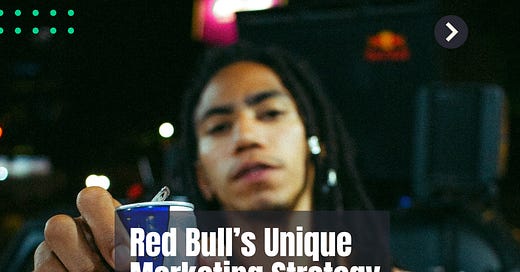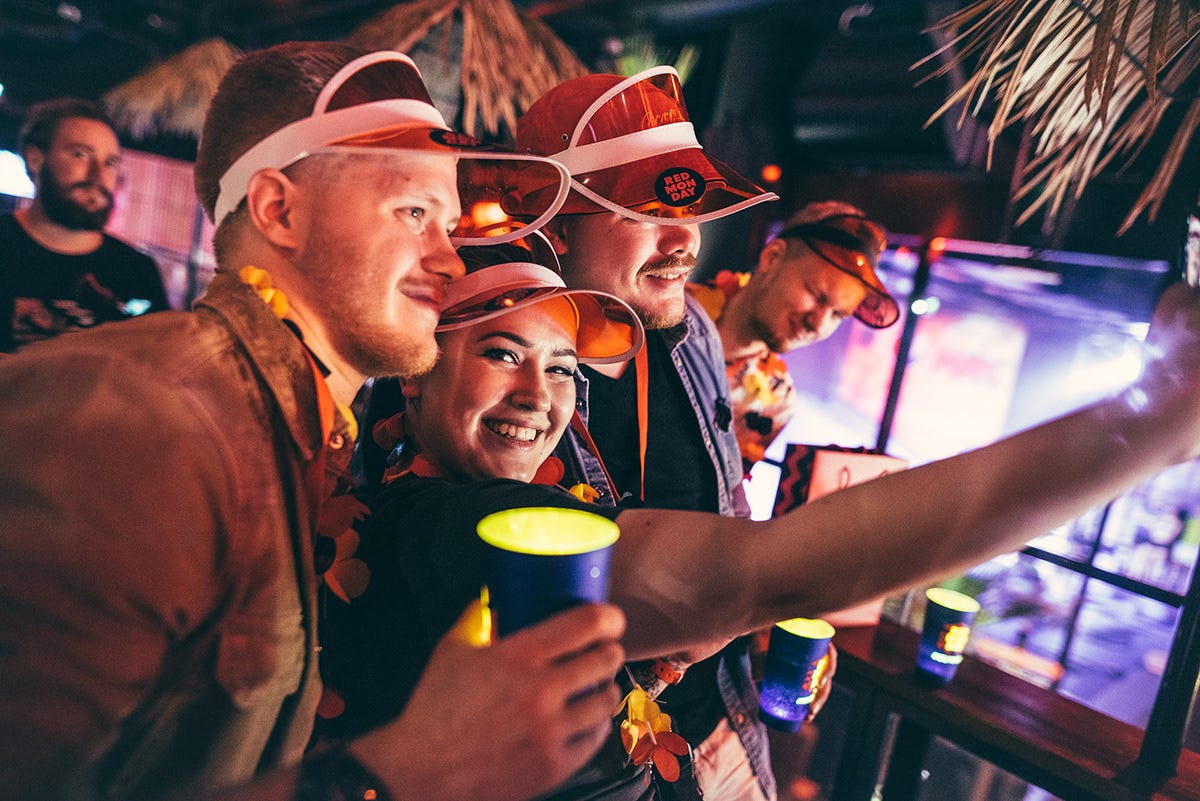Happy new year! Hope all of you have had a great start to 2024 just like we had while writing our first newsletter for our brand new edition “Marketing Hustle.”
As promised in the previous newsletter, we are here with a breakdown of a marketing strategy; of a brand that we may love or hate but can’t ignore.
Most of us know Red Bull as an energy drink which we may have consumed to stay up all night or used as a mixer for alcohol. But when we look at their marketing and branding efforts, it becomes clear that they are more than just an energy drink company.
From a marketing lens, It would be apt to call Red Bull a media house or even an entertainment company.
Amusing! Isn’t it? And their inception story is just as interesting.
Red Bull first entered the market in 1987 after Austrian salesman Dietrich Mateschitz visited Thailand and heard about an energy tonic ”Krating Daeng” created by Chaleo Yoovidhya. The tonic was supposed to help keep drinkers awake and alert. He then tinkered with the product for a few more years to make it suitable for the European palate and finally launched the renowned Red Bull.
But making a product is one thing and creating demand for it is a completely different ball game. So, Red Bull decided to make the product an outcome of a lifestyle that their audience were seeking, instead of cold selling an energy drink. They decided to promote the lifestyle of adventure and adrenaline which went absolutely perfectly with their caffeine heavy product.
But it's also easy to lose track by setting subjective themes like “adventure seeking” which may make the marketing blunt and boring. So they skilfully narrowed down to the few major activities which their male audience in the age group of 18-35, were most likely to get adrenaline from. Sports and Music therefore became the core pillars of their marketing strategy.
From sponsoring music festivals and F1 teams, to RedBull Rampage in partnership with Gopro, to hosting their own marquee Red Bull Stratos, Red Bull has built their entire brand by associating strongly with the pulse of their target audience. They stayed true and consistent to their promise of providing adventure, adrenaline and ‘giving people wings’.
And since then their caffeine cans have become a symbol of adventure and their marketing strategy a case to be studied.
Bonus fact: In 1994, when club owners in the UK weren’t up for showcasing Red Bull in their clubs, Dietrich came up with an un-orthodox promotion plan. He disposed of thousands of empty Red Bull cans across London's dump yards, specifically in and around areas of the night clubs. And the outcome was mind boggling. The illusion of popularity increased the demand dramatically and the same club owners who had shown him the door, welcomed him with open arms.
That’s all for today! We appreciate all of your kindness and support. You are the reason we are here and we promise to come back with interesting cases and analysis as the year progresses.
If you liked this case breakdown, please forward it to a fellow marketer and help us grow.
See you next week!





